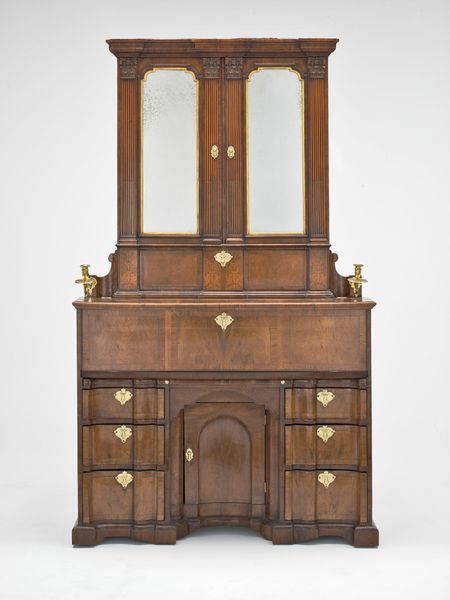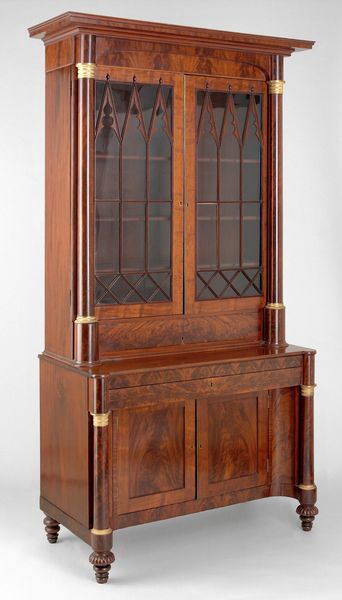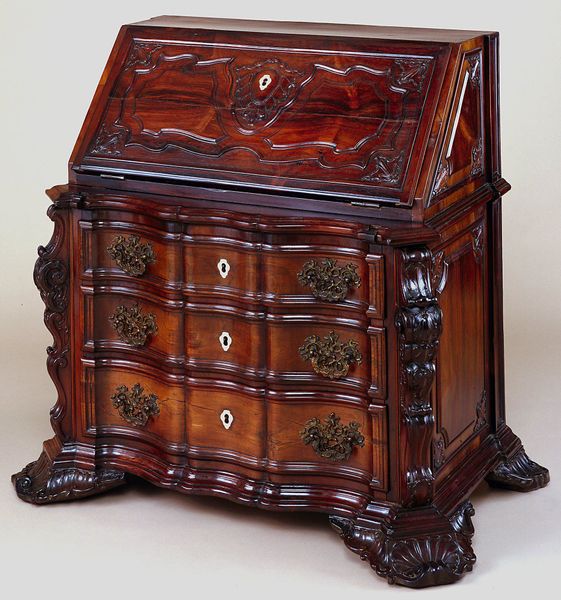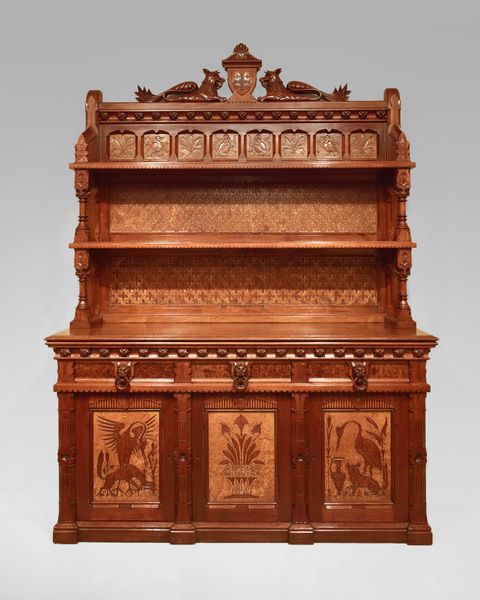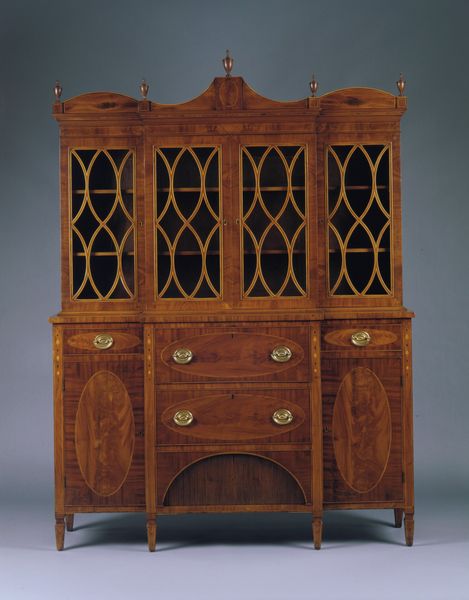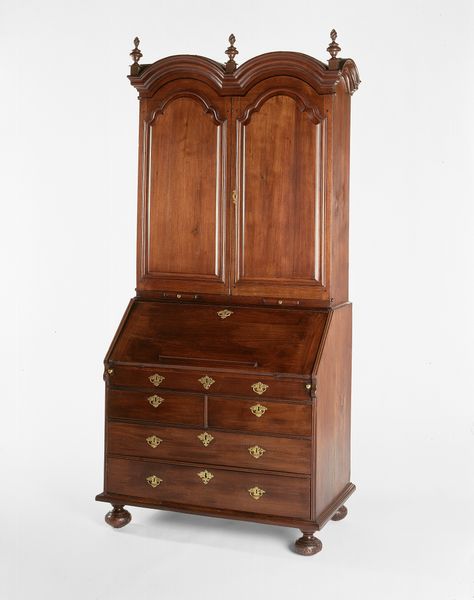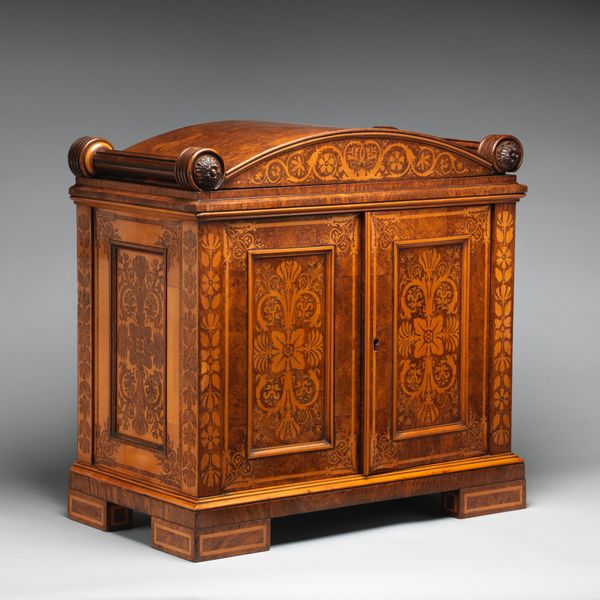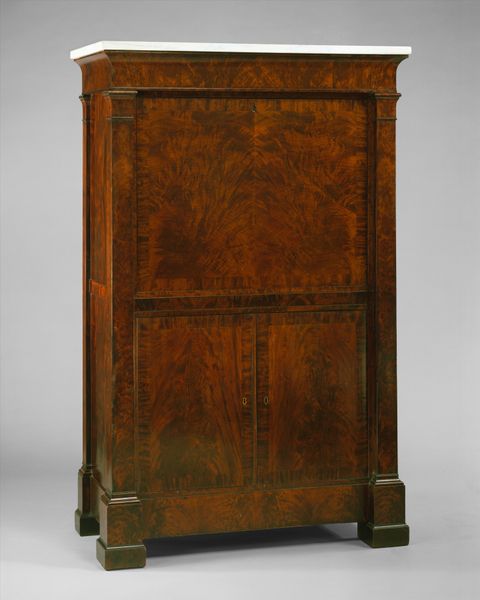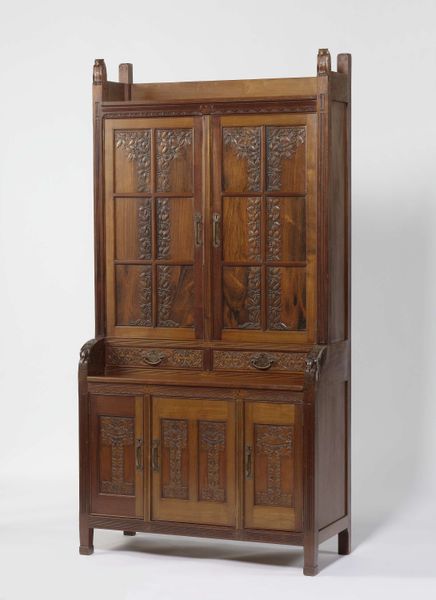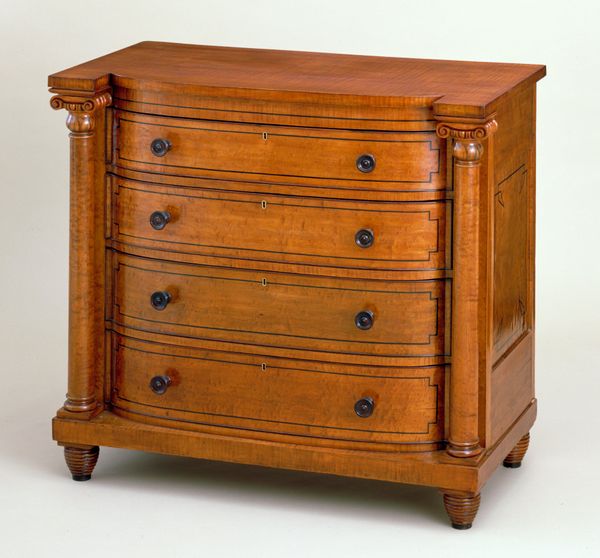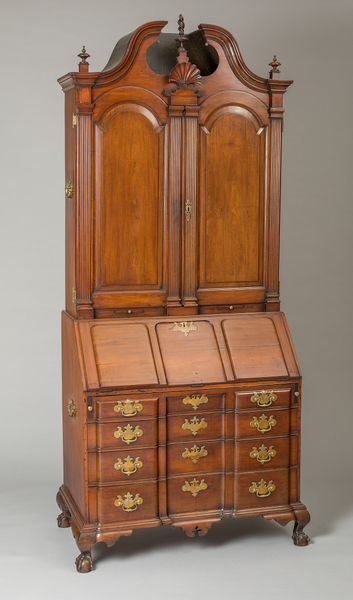
sculpture, wood, architecture
#
sculpture
#
figuration
#
folk-art
#
sculpture
#
architecture
#
architecture model
#
wood
#
decorative-art
#
miniature
#
architecture
Dimensions: 5 11/16 x 3 1/2 x 1 9/16 in. (14.45 x 8.89 x 3.97 cm)
Copyright: No Known Copyright
Editor: Here we have a rather curious object: a miniature "Furniture Cabinet," believed to be from the 1950s, maker unknown but attributed to Banthrico, Inc. It's a wooden sculpture. Its small size and perfect replication of the original inspire curiosity. How do you interpret this tiny wooden replica? Curator: I see a fascinating intersection of craft, industry, and consumer culture. Consider the material: wood. In the 1950s, wood represented both traditional craftsmanship and burgeoning mass production. This piece likely reflects aspirations for middle-class domesticity, a longing for quality furniture rendered accessible through replication, challenging that original labor and making of furniture with miniature folk art, no? Editor: It makes me consider who might have desired this piece? Curator: Exactly. Think about the function of these miniature sculptures as marketing objects or promotional materials from Banthrico Inc. In some way the cabinet is a souvenir and sample of domesticity, crafted to generate demand and to reinforce the dream of a well-furnished home as key to social status and material comfort after WWII. It's about the distribution of that dream to the middle classes. Editor: So, it's not really about art, but the mass consumerist approach of American society, rendered with nostalgic care? Curator: Precisely. It's a commentary on the production and dissemination of cultural ideals in the mid-20th century. Examining the physical object alongside its intended use deepens our insight into that era's values. Editor: I hadn’t thought about it that way, considering art from this production angle offers so much more nuance. Thanks! Curator: Of course. And next time you encounter something like this, try to envision the manufacturing and what that signifies for contemporary values of making and craft.
Comments
No comments
Be the first to comment and join the conversation on the ultimate creative platform.
